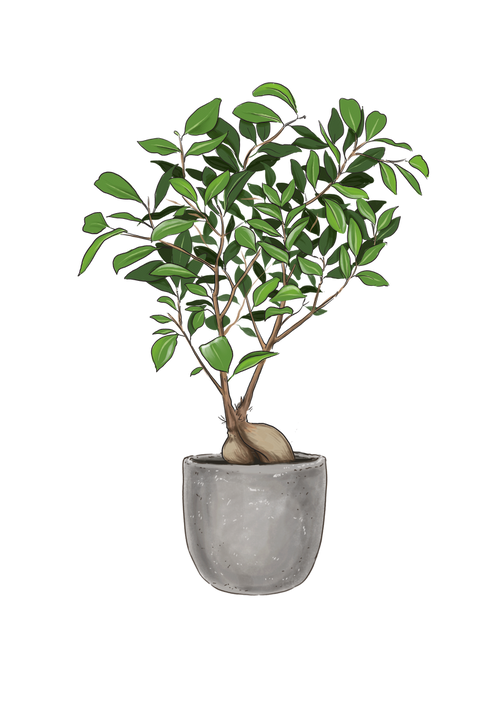Ficus Ginseng Care Guide

-
Light : High
Can live in medium light but performs better when exposed to bright light. Direct sun will burn leaves. (southern or eastern exposure)
-
Water : Medium
Use filtered, bottled, or tap water sitting 24 hours to release the chemicals and water enough that the water discharges out of the drainage holes. Once the water is fully drained, replace them into the cache or decorative pot. Don't let the roots sit in standing water. Keep the soil consistently moist but avoid overwatering as they can suffer from root rot. Do not let the root ball dry out or they will protest with damaged leaves. During winter months, reduce watering while they are in dormancy.
-
Humidity : High
Enjoys high humidity. Spritz daily and add a pebble tray or humidifier to keep the humidity high.
-
Temp : 60℉ - 80℉
Keep this plant in rooms where the temperature is above 68°F.
-
Zone : 9|10|11
Outside: Keep them in afternoon shade but bright indirect morning light on a patio out of direct sunlight to prevent leaf burn where nights are above 60°F.
-
Fertilizer : Weekly
Fertilize every 2-3 weeks by diluting an organic balanced liquid fertilizer into the water while watering. If you have the fancy leaf begonias, use a higher nitrogen fertilizer in the early spring. You may switch to a high phosphorus for a flowering boost. Fertilize in the spring through fall months but let the plant rest in the winter. Avoid any foliar feeding on the leaves.
-
Repotting : 2 Years
Wait until it's about time to water your Ficus to repot them.
Choose a well-draining pot that is 2" wider than the current container. Add a mesh or fine screening to the bottom of the pot to hold in the soil mix. This screen will prevent the holes from getting clogged.
Use fresh bonsai potting mix for repotting. Remove the plant and use a small rake or paintbrush to remove the old soil from around the roots.
Use a sterile set of pruners to remove one-fourth to one-third of the roots. This pruning will trigger more roots to emerge.
Place in the new container with fresh mix and backfill, pressing down the soil, and then water thoroughly. Add more soil if it settles during watering to stabilize.
-
Cleaning : Monthly
A good time to do this is when you are already watering your plant. To clean:
Use a soft paint brush to dust the roots.
Trim off any dead or damaged limbs, branches, or roots with sterile pruners.
Move the plant to a tub or shower area.
Fill your watering can with a shower nozzle with filtered or distilled room temperature water.
Shower the leaves with a gentle wash to knock off any dust from the foliage.
Prune the limbs to create foliage where it is desirable to generate balance up and down the trunk.
Watch for offshoots and remove any vegetation growing on the rooted areas to display their shape better.
-
Propagation :













